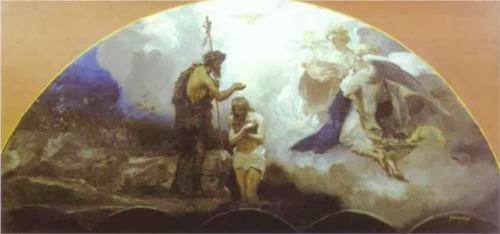 |
| Presentation of Christ Mantegna (1431-1506) |
Feb 2nd
commemorates the presentation of Jesus at the temple in Jerusalem, a
traditional observance of faithful Jews on the birth of a first son. With the
hindsight of the Last Supper, the Presentation of Christ in the Temple can be
seen to prefigure the Eucharist in which, day by day, Christians have the
opportunity to give back to God back the gift He has given us. So Mary and
Joseph return to God that which uniquely came from God.
Traditionally
called ‘Candlemas’, the feast of the Presentation has several meanings. The lectionary
readings are the same each year, and identify Jesus with ‘the Lord whom you
seek’, the one whose unexpected appearance ‘in the temple’ is predicted by the
prophet Malachi. The appointed Psalm, appropriately, extols the beauty and
wonder of God’s ‘dwelling place’ and the joy of being there. The association
with candles, carried in procession, comes from the fact that a central part of
the Biblical episode recorded in the Gospel for the day is the aged Simeon's
'Nunc Dimittis' in which he articulates the remarkable insight that the baby he
holds in his arms is 'a light to lighten the Gentiles and to be the glory of
God's people Israel'.
Candlemas comes
forty days after the nativity, and has long been regarded as the very last
feast of the Christmas season. This is not just because it records a Jewish
birth rite, but because Simeon's words summarize so memorably the truth of the
Incarnation. In the ceremony for Candlemas, candles for use, at home as well as
in church, throughout the coming year are blessed with this prayer:
God our Father,
Source of all
light,
this day you
revealed to Simeon the light of your revelation to the nations.
Bless these candles
and make them holy.
May we who carry
them praise your glory, walk in the path of goodness and come to the light that
shines forever
Grant this through
Christ our Lord.






